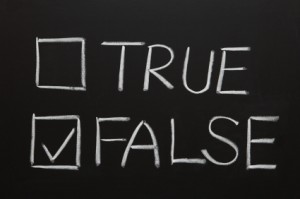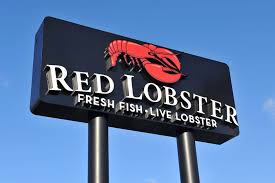Questions To Improve Decisions

What else should I consider?
One of the critical skills of critical thinking is the ability to ask insightful, illuminating questions. Indeed, questioning is an attitude as much as a skill. As information flows into our brains, we know that it needs to be checked for clarity and accuracy. We assume the same attitude that a warehouse manager might have: all incoming deliveries need to be checked.
I always keep two simple questions in mind:
Why do I/you think that?
How do I/you know that?
These help me review incoming information quickly. I can then assign the information to three large – and fairly fuzzy – categories:
Probably true
Probably not true
Unproven/can’t evaluate
The virtue of my little system is not that it’s 100% accurate but that it’s simple. I can do it in real-time and keep rough track of ideas and concepts while discussing them. It’s fuzzy and lumpy but also quite handy.
When I asked my students about their go-to questions, they came up with five categories in a stepwise process, beginning with gaining self-control and ending with fixing the process. Their system covers more bases than mine and the categories are more structured. The downside? I find it hard to remember five things simultaneously. It’s great for moments of quiet reflection and evaluation but less useful for real-time discussions.
I may have found a compromise between the two systems. Joe Y.F. Lau calls it the fourfold path to good thinking in his book, An Introduction to Critical Thinking and Creativity. The four questions in Lau’s path are straightforward:
- What does it mean? – Subquestions might include: Are the main concepts clear? Can we make it more precise? Are there examples that illustrate the concept (or its opposite)? How does this concepts relate to other concepts that I believe to be true (or untrue)?
- How many supporting reasons and objections? — Subquestions might include: How many reasons tend to support the claim? How many reasons tend to undermine the claim? Can we identify examples and counterexamples? How many of each?
- Why is this important or relevant? — Subquestions might include: What are the consequences? Is it surprising? Have I learned something new? Who is supporting (or opposing) this claim? Why are they doing so?
- Which are the other possibilities to consider? — Subquestions might include: What other information might be relevant? What other cases should we think about?
The last question seems very similar to two other sources. As Daniel Kahneman reminds us: What you see is not all there is. As the Brothers Heath remind us: the first step of the WRAP decision process is, Widen Your Options.
The output of Lau’s system becomes the input to Kahneman and Heaths’ decision-making frameworks. The beauty of Lau’s system is that it verifies and evaluates the information before it gets into the decision process. Like the warehouse manager, we ensure the quality of the input. That’s necessary (but not sufficient) to ensure the quality of the output.
The other virtue of Lau’s approach is its simplicity. I can keep four points in mind (most of the time). Perhaps we can simplify it even further by creating an acronym from it. Anyone want to try?
Facts Behaving Badly

One building or two?
A fact is a fact is a fact. Isn’t it? Well … not so fast.
Let’s think of a simple fact … like the number of rooms in a building. That seems factual, doesn’t it? It’s observable, verifiable, reliable, and objective. Multiple, independent observers should come to the same conclusion. If John says it’s X, Mary can verify his work by counting again. Further, it doesn’t change over time. Today’s answer should be the same as tomorrow’s. Additionally, it’s not subjective; it doesn’t depend on your mood. It’s objective – it exists in the real world, not just inside your head.
That’s what you may think but it’s actually a bit more complicated. I often run an experiment in my classes and workshops that shows how difficult it can be to pin down a fact.
I start by asking for three volunteers. My instructions are simple: “I want you to answer the question: how many rooms are on this floor of this building?” If they ask questions, I say, in a slightly superior voice, “This is a simple exercise. There’s no need to ask questions. Don’t make it more complicated than it is. Just go and do it.” (Did you ever have a boss that did this to you?)
Then I send the volunteers out one at a time to count the rooms. Each one is instructed to count the number of rooms, write the number on a piece of paper, give the paper to me, and tell no one else the number.
I collect the three answers and compare them for the class. The three answers are never the same. In fact, they often vary by a factor of two. One person may count 24 rooms; another counts 48. Occasionally, I’ll find that two answers are the same but, if so, the third is usually quite a bit different.
How do we account for this? Two thoughts come to mind. First, the exercise contains three different concepts that need to be defined: room, floor, and building. What is a room? Does a janitor’s closet count? A bathroom? What’s a floor in this sense? What if you’re in split-level building? And what’s a building? What if two buildings are joined together, as is the building where I teach at the University of Denver?
Second, this helps to illustrate how reality is an internal concept. Each volunteer has a model of reality in her head. But the models are different. In some sense, there is no external, verifiable reality. We just build models and your model is different from mine. The result? Endless confusion and controversy. Moral: be careful with your facts.
How We Think And What It Means

Let’s think about this.
We have not one but two thinking systems in our heads. Daniel Kahneman, a Nobel laureate in economics, dubs them System 1 and System 2. System 1 is fast, automatic, energy efficient, subconscious, and always on. We don’t think about it; it thinks for us. Some observers claim that System 1 makes 95% of our decisions. We merrily mosey along, not even aware that we’re making decisions.
We are, on the other hand, aware of System 2. When we think about thinking, we’re thinking about System 2. It’s our conscious self. It’s where we consider ideas, weigh evidence, and reach conclusions. Unfortunately, System 2 is an energy hog so we use it sparingly. Like other forms of exercise, System 2 requires effort, practice, and discipline. It’s hard.
We get by most of the time on System 1. Usually that’s fine – System 1 makes a lot of good decisions. But not all the time. System 1 produces biases like stereotyping, temporizing, risk aversion, and unbridled fear. If we don’t have an effective, well-tuned System 2 to overcome those biases, we can do a lot of damage to ourselves and others.
Maria Konnikova (pictured), in her lovely book, Mastermind: How To Think Like Sherlock Holmes, compares System 1 to Watson and System 2 to Holmes. System Watson represents “…our naïve selves, operating by the lazy thought habits … that we’ve spent our whole lives acquiring….” On the other hand, System Holmes, represents “… our aspirational selves, the selves that we’ll be once we’re done learning how to apply his method of thinking to our everyday lives and, in so doing break the habits of our Watson system once and for all.”
System Watson comes to us naturally. System Holmes needs to be learned, practiced, and mastered. As Konnikova notes, “…to break from that autopiloted [Watson] mode, we have to be motivated to think in a mindful, present fashion, to exert effort on what goes through our heads instead of going with the flow.”
David Brooks, in the Social Animal: The Hidden Sources of Love, Character, and Achievement, describes our bias towards the conscious mind (System 2): “The conscious mind writes the autobiography of our species. Unaware of what is going on deep down inside, the conscious mind assigns itself the starring role. It gives itself credit for performing all sorts of tasks it doesn’t really control.”
Brooks compares the conscious mind to ”… a general atop a platform, who sees the world from a distance and analyzes things linearly and linguistically….” The unconscious mind, “…is like a million little scouts [that] … careen across the landscape, sending back a constant flow of signals and generating instant responses. They maintain no distance from the environment, but are immersed in it. They scurry about, interpenetrating other minds, landscapes, and ideas.”
For Brooks, the individual is the star in the “outer mind”. In contrast, “… the inner mind highlights the power of relationships and the invisible bonds between people. If the outer mind hungers for status, money, and applause, the inner mind hungers for harmony and connection….”
From Kahneman, we learn about the native biases of System 1 and an important implication: we’re not rational when it comes to economic matters. This is the insight that won the Nobel Prize. From Konnikova, we learn how to observe and deduce. The implication: with sufficient motivation, we can indeed learn to overcome our biases. From Brooks, we learn that System 2 is an individualist while System 1 is a collectivist. The implication: this duality is an important source of tension in the body politic.
What else can we learn by comparing System 1 to System 2? Let’s talk more about that tomorrow.
Neurobranding – 1

Why did I buy it? Who knows?
I wrote recently about the unsettling experience of forgetting my PIN while at an ATM at the Denver airport. My mind went blank; for the life of me, I couldn’t remember the number.
As I walked away from the machine, the number popped into my head: 2061. I was sure it was the right number, so I returned to the machine and entered it. Wrong. I transposed some of the digits. Wrong again. Finally, I gave up. As I walked away again, I noticed that I was standing by a door with a number on it: 2061.
My System 1 had noticed the number but didn’t bother to send it to System 2. But when my System 2 broadcast an emergency message, looking for a four-digit number, System 1 offered up the most recent one it had seen. The number just popped into my head. (For more on Systems 1 and 2, click here).
To recap: information entered my brain via System 1 without my being consciously aware of it and I took action based on it.
So here’s a question: could advertisers use similar techniques to plant information in my brain without my knowing it and induce me to take action on it … by buying something?
The short answer: of course they could. In fact, they probably already have. That, at least, is the theory put forth by Peter Steidl in his book, Neurobranding.
Steidl starts by considering what he calls the habitual brain (System 1) and the considering brain (System 2). System 1 makes the vast majority of our decisions – and does so on its own without bothering to send a memo to our conscious self (System 2). Steidl points out that System 1 make a vast majority of our purchase decisions as well.
Broadly speaking, System 1 works by comparing new events to past memories. If a new event corresponds to a happy memory, then we’ll probably feel happy, even if we don’t consciously understand why. If the event evokes scary memories, then we become wary. Did you ever have an uneasy feeling about something? Your System 1 is trying to tell you something. It’s not a bad idea to pay attention.
Steidl also points out that the purpose of branding is to create memories. In fact, it’s a three-step process. First, we create a memory. If we can create a memory that corresponds to a happy memory already stored in the habitual brain, so much the better. Second, we shape the memory, using a variety of signs and symbols. Finally, we activate the memory to keep it from fading away.
All this can happen blow the level of consciousness. Indeed, Steidl argues that most consumers really don’t know why they buy most products. If you ask them, they’ll make up an answer in a process known as confabulation. A confabulated answer has nothing to do with reality, which is why market research is so often wrong. You ask a consumer a question. The consumer confabulates. You believe her. You’re in big trouble.
If all this happens below the threshold of consciousness, why do we bother with awareness research? Steidl argues that awareness and attribute research are essentially useless. Consumers may be aware of many brands but they’re not aware that they’re aware.
Let’s go back to the ATM example – and assume that you interview me before I realized where the number 2061 came from. If you had asked me, “What’s the number on the door you’re standing by?”, I would have answered, “I have no earthly idea.” I didn’t know that my System 1 had picked up the number. I didn’t know that I knew.
So, how do you plant memories in someone’s System 1? It’s not easy but it can be done. I’ll return to this in an upcoming article.
Revitalizing A Brand: Red Lobster

Mmmmm … pork chops.
I read the other day that the Red Lobster chain of seafood restaurants is going to revamp its menu to add more seafood. Since the brand is known for seafood, it seems like a good idea. The question is, why did they ever shift away from seafood in the first place?
Red Lobster is a seafood-themed, family-oriented brand that offers good value for the money. You won’t get world-class food there but, as one of my students points out, it’s a great place to take the kids on a Saturday afternoon.
Unfortunately, the brand’s sales have been in a bit of a tailspin for a few years. Even more unfortunately, the company’s managers made a classic branding mistake. Instead of trying to shore up vulnerable customers and recapture lost customers, Red Lobster aimed to attract new customers.
To attract new customers, the chain introduced new, non-seafood menu items, like pork chops and tortilla soup. Seafood, as a portion of the total menu, dropped to 75%. Using a more diverse menu, the brand hoped to attract more diverse customers in larger numbers.
It didn’t work. After all, the Red Lobster brand stands for seafood. I doubt that many people said, “Honey, I’m in the mood for pork chops. Let’s go to Red Lobster.” You just wouldn’t think of pork chops and Red Lobster in the same sentence.
How do I know that this is a classic branding mistake? Because Kevin Lane Keller says so. It’s right there on page 469 of his textbook, Strategic Brand Management:
“In an attempt to turn sales around, some firms mistakenly focus on … chasing after new customers. This is the riskiest option. If it fails, two bad things can happen: the firm may fail to attract any new customers, but even worse, it may lose existing ones.”
I suspect that this is also what happened at JC Penney. The company had always been a middle-class haven, with mid-tier products and revenue driven by sales promotions. The brand hired Ron Johnson – fresh from his success at building Apple’s retail empire – to attract a cool new clientele. The effort failed. Just as Keller suggests, the brand revamp wasn’t enough to attract new customers but was more than enough to alienate traditional customers.
Red Lobster seems to be getting back on track. Their CEO, Salli Setta, says, “”At the end of the day, we believe that seafood is really why people come to Red Lobster.” Seafood accounts for 85% of the new menu. The company has also changed the way it prepares and plates its food and the way the menu is organized and presented.
I hope that Red Lobster recovers its past glories. It’s a good brand. In the meantime, I have a simple piece of advice for any brand whose fortunes are flagging. If you want to avoid a multimillion-dollar branding mistake, just read Kevin Keller’s textbook.